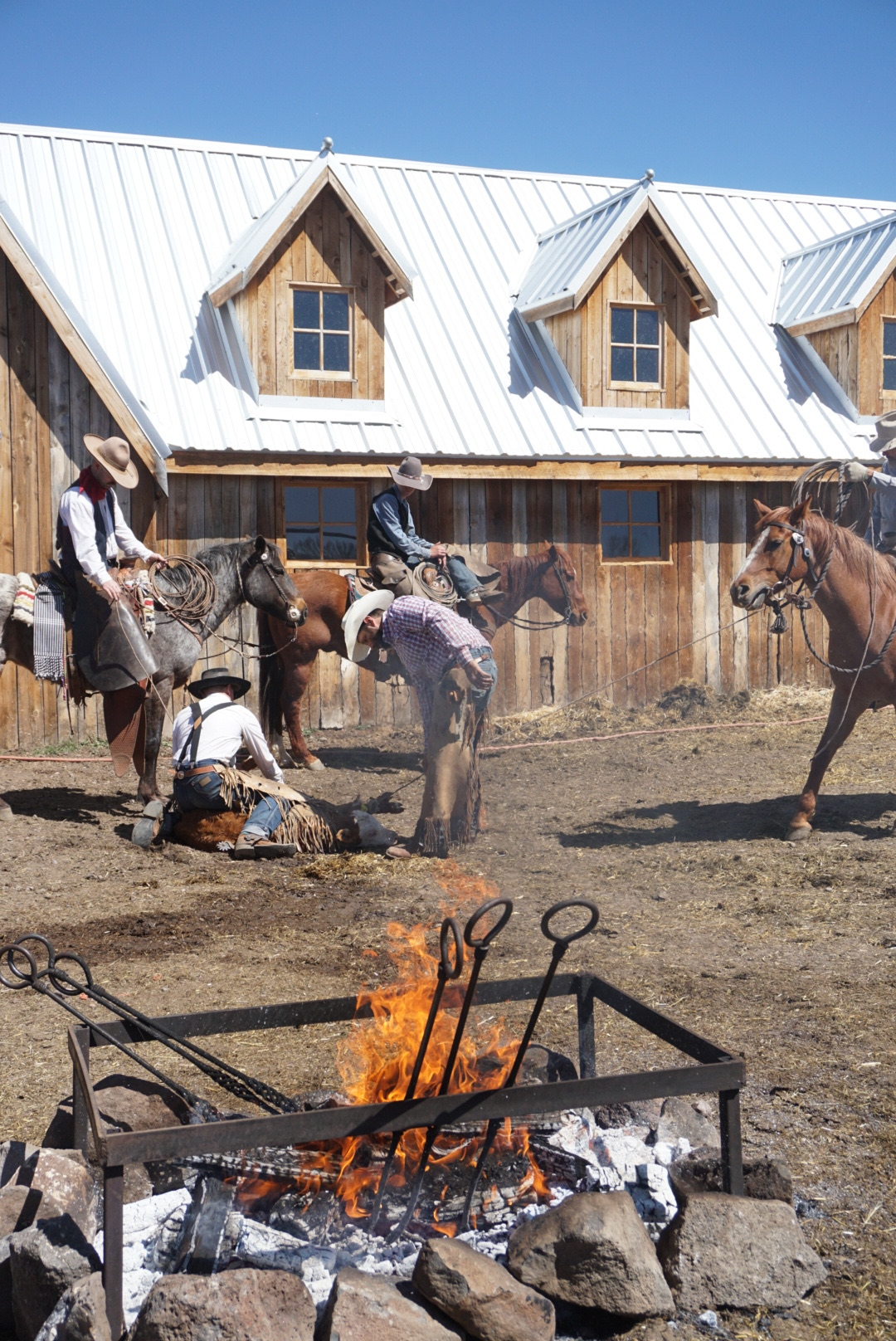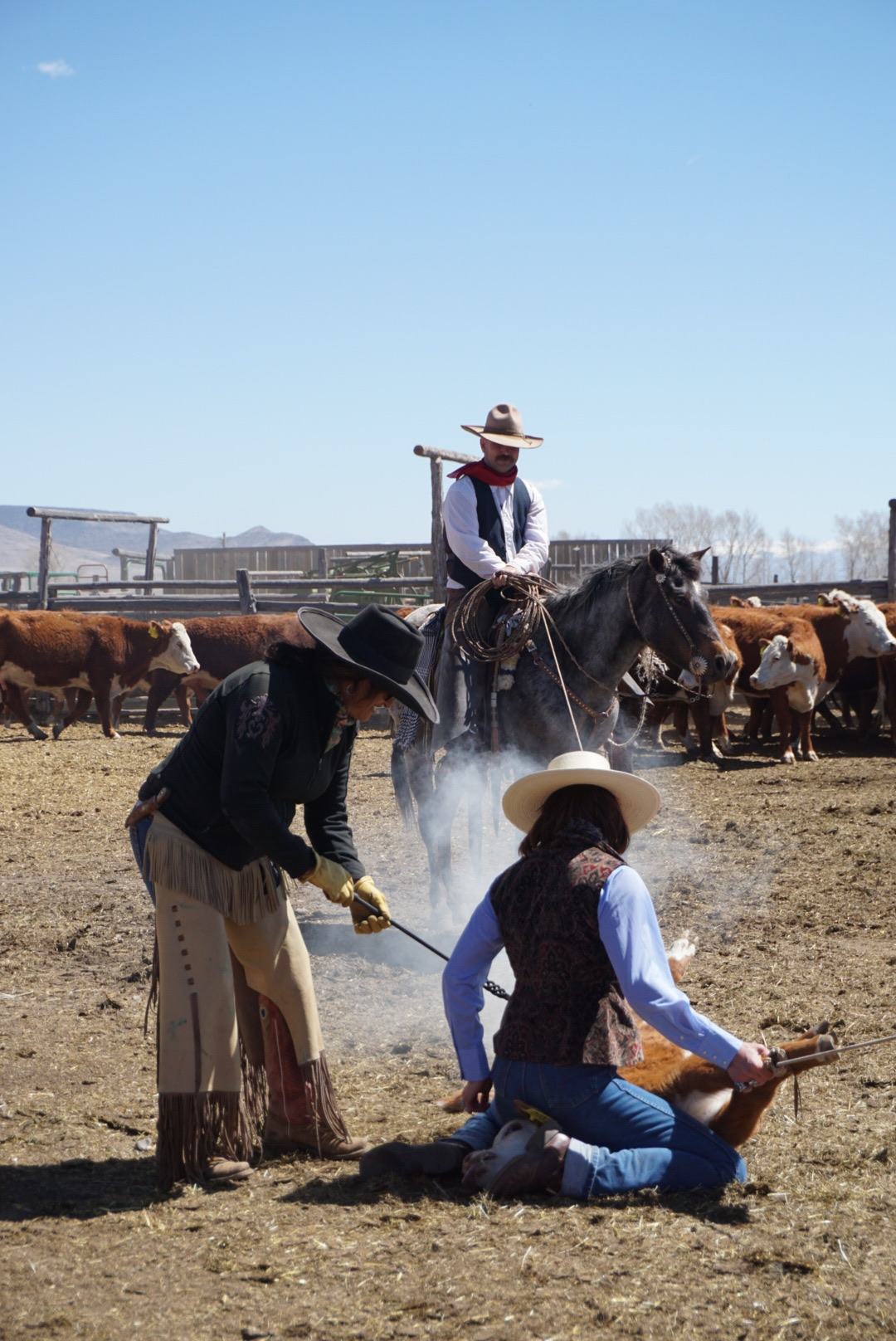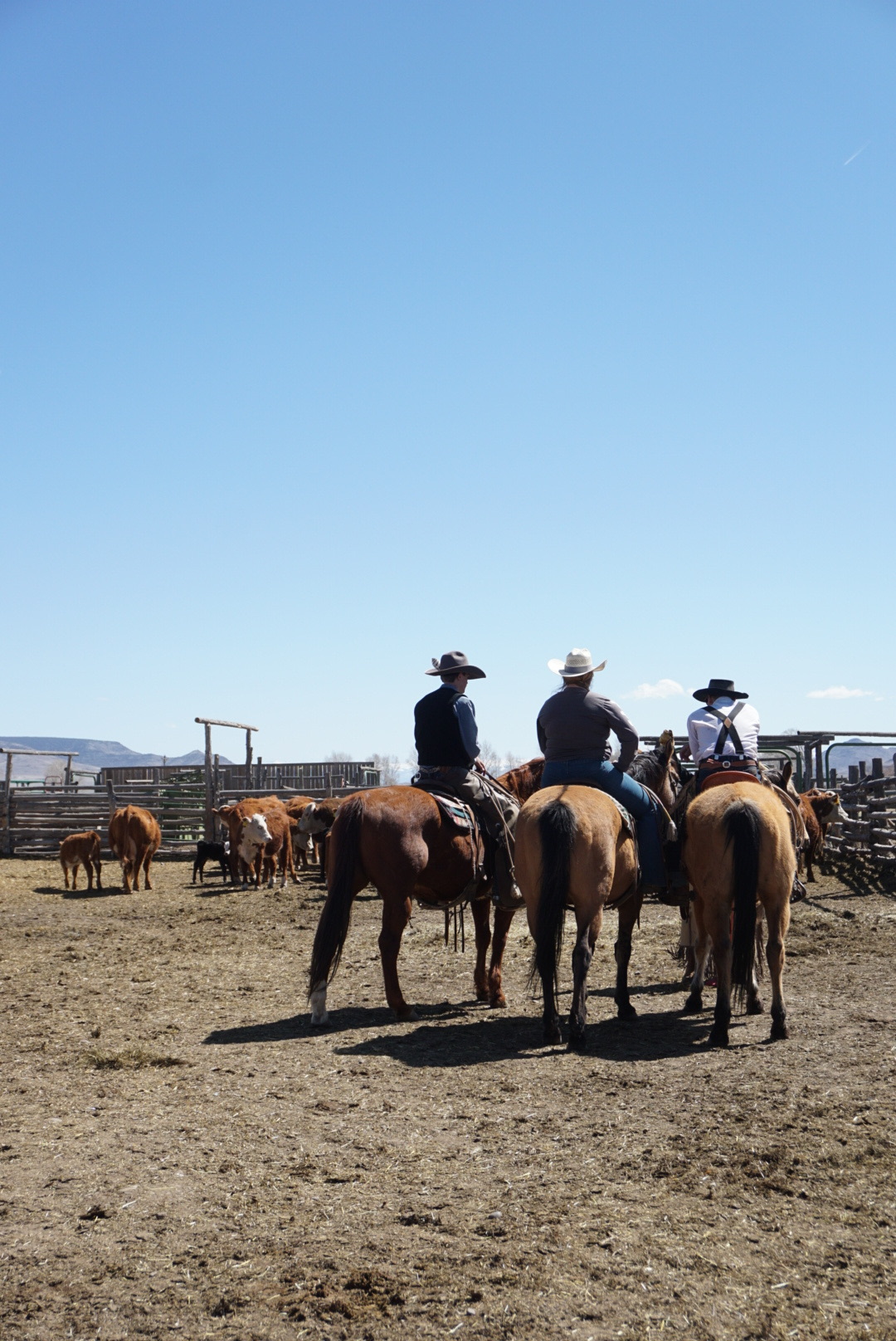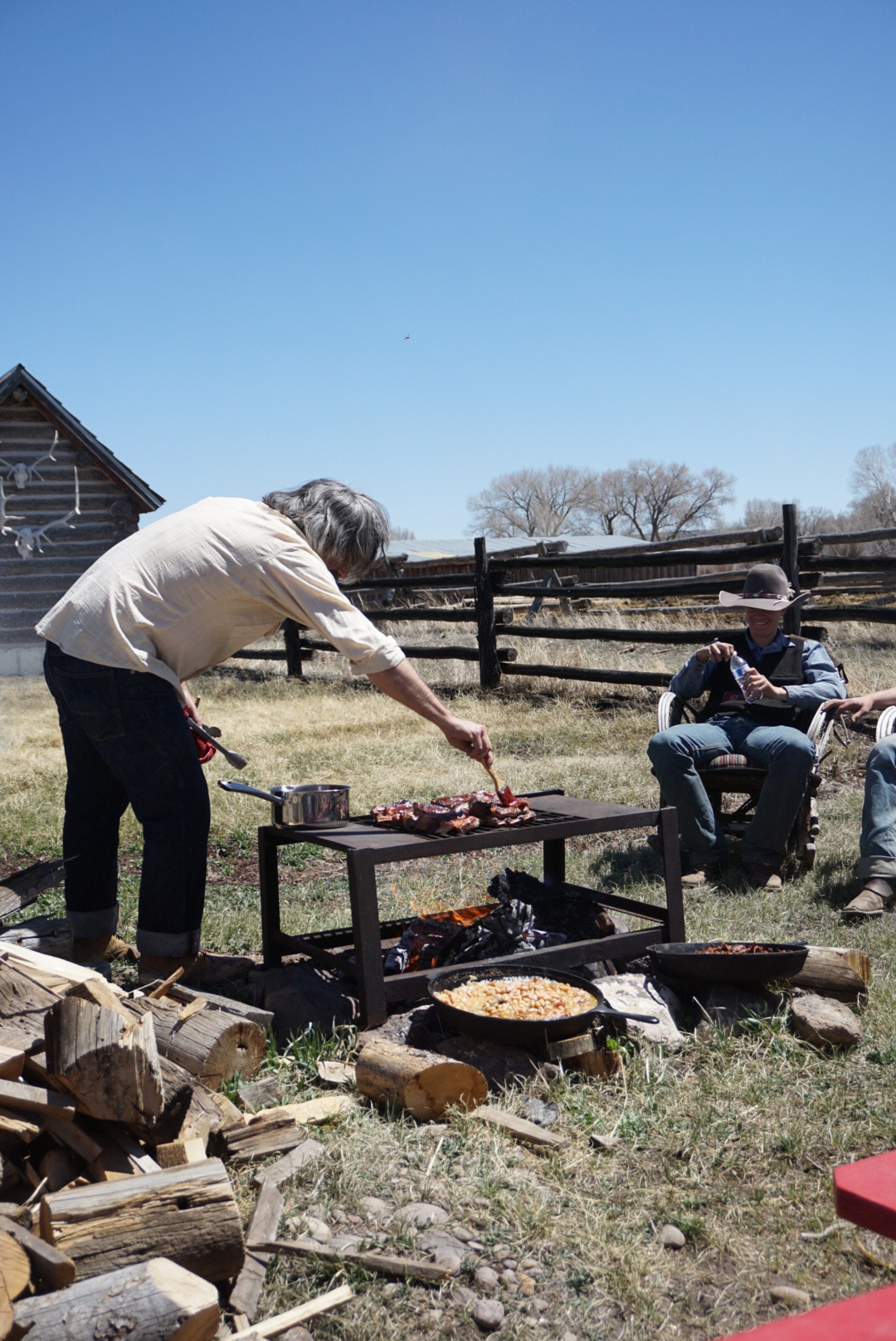Musings from the Cattle Branding
Sofia stopped the dispersed chatter and called us all to her. We gathered around the fire, where beans and meat in cast iron saucepans bubbled under the dry afternoon sun. She thanked everyone for being there that day, for contributing. She called our ancestors into our space. She told us that it is a duty for each of us to live in a way that uses our gifts. We all stood quiet as she spoke; she is the matriarch. Tears welled up in her eyes as she called to our ancestors in the sky.
It’s April and we have all come to Sofia’s ranch for a cattle branding. The calves are driven into the pen with a few of the cows, who are there to help keep them a bit calmer. I was nervous to come, and my friend Hope was a bit nervous to invite me and our other two friends, Sophie and Helaina, who were visiting her and her sister Celeste in New Mexico. (Sophie took all the photos shared here.) This was the first cattle branding that we, the visitors, had attended.

One by one, cowboys rope a calf from the crowd and drag it towards the fire, where the brands glow orange. Someone holds the calf’s front legs, someone else the back. Two shots are administered, vaccines to stave off respiratory infection and other common sicknesses. Someone takes the brands from the fire and holds them to the calf’s side, burning a heart-shaped mark into its flank. The calf cries as smoke rises from its side.
The calf is released and another is roped. The process is repeated until all the calves are branded then they’re released from the pen. The whole process is less cruel than I thought it would feel at first. The calves look well fed, as do the cows. The herd looks like a family. This morning of fear and pain for them helps keep them healthy and allows them summers of ranging free in the mountains on vast tracts of BLM land.

In the cattle pen, I talk to a woman named Amanda and her mother. They are overseeing the vaccination of the calves. Amanda’s mom tells me that the US produces 20% of the world’s cattle but 80% of the world’s beef. She scoffs at the urban elites’ concept of being eco-friendly, of thinking that eating vegan or vegetarian can make a difference in the task of combating climate change. She speaks also of the benefits of ranging cattle. They produce methane from their burps, yes, but so did the buffalo that used to range in great numbers across the plains of North America. Their heavy footsteps help churn up the soil, playing a role in carbon sequestration and oxygenation in the soil.
This conversation stands in stark contrast with a talk on land use, climate change, and carbon sequestration I attended in my capacity as a climate scientist. The researcher giving the talk also mentioned the methane produced by ruminants, like cows and buffalo, saying that the buffalo produced the greenhouse gas too, before they all died.
I remember bristling at that. Died?! What a euphemistic way to refer to the systematic culling of a species central to the way of life of the Native Americans. The scientists observe data, empirically analyze information, and make conclusions about land use change. The ranchers I talked to live on the land. They depend on the cattle for their livelihoods. They live with their cattle, they care for them, turn them out to pasture, and see the changes in the landscape year after year. They notice when and where their cattle graze, and how that impacts the ecosystem. They are acutely aware that they depend on the land for their survival in a way that scientists, like myself, are sheltered from.

Allowing herds of grazers to wander freely over a landscape can reverse the process of desertification. It can make the landscape more suitable for more life. It can make the soil more capable of holding carbon it takes up from the air. Was not the dust bowl a result of killing off the wandering buffalo?
After our talk, Amanda gets on her horse and starts roping calves. I talked to the cowboys for a while about rope - the differences between rope woven from rawhide, grasses, and synthetic fibers. Different rope behaves differently as it lassos through the air. Some of them make their own chaps or braid their own rawhide rope. They were proud of their abilities and their profession. They mentioned that their way of life is dying out - small farms and ranches have mostly given way to large corporate operations. These are another group of people whose way of life, which, similar to the Native Americans (as well as the Palestinians), is tied to the land and threatens the relentless machine pace of capitalist “progress”.
I don’t mean to romanticize this way of life too much, though I do find its style and roughness both charming and impressive. It’s hard work that takes a lot of skill. It’s hard to make ends meet. Sofia raises cattle, but she also works as an architect. Amanda and her mom both work on the family ranch, but hold down other jobs too, to pay the bills.
After the branding, while we were eating a delicious meal that Sofia’s friend Ian spent all morning preparing, one of the cowboys made an off-color joke invoking George Floyd’s final words. It was one of the boy’s 19th birthdays and to commemorate, he was getting the customary lashes from another cowboy’s handmade chaps. The boy had fallen out of his chair and was wheezing a bit. “I can’t breathe!” came from a member of the audience, followed by loud bellowing laughter. I looked around, and made knowing eye contact with my friend Hope, but didn’t notice too much reaction otherwise.

Everything is full of contradictions, everything is a process. How did Sofia get here - architect, rancher, mother, matriarch? How will each of us get where we are going? Out here, the divide between urban and rural in America is so visible; the disharmonies between the two will drive us all forward in some way.
Sofia is a trans woman of color. One of her cowboys was just laughing about the lethal effects of systemic racism, the state-sanctioned violence which serves capital’s interests. And everyone on the ranch that day are all in agreement that our leaders are fumbling – losing the plot that says we need to take care of each other, take care for the future, feed baked beans to a crowd that includes an unemployed climate scientist. After all, we are all suffering something. After all, we’re all stumbling towards the future we’re trying to construct. Aren’t we all praying for change, for transformation, even as it terrifies us? And shouldn’t we all be working to make change, too? Perhaps to start, that means learning from the past to figure out how to move forward.